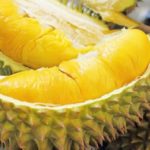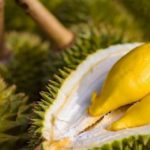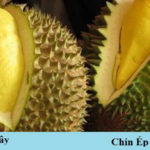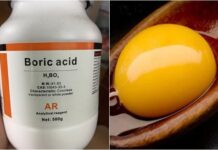Durian is a popular fruit, but many people dread buying it for fear of ending up with a dud. Durian has a tough, spiky exterior, making it challenging for some to select a good one.
To choose a durian with plenty of flesh, few seeds, and a sweet, fragrant aroma, consider the following:
Based on the Durian’s Shape:
A good durian is not necessarily the largest or smallest, but the waist of the fruit should be evenly swollen, not lopsided. If the segments are clearly visible, it indicates a tasty interior with ample flesh and large, plump segments. Ripe durians have a slightly cracked exterior, releasing a distinctive aroma. Avoid durians that appear overly firm, round like a football, and lack distinct segments.
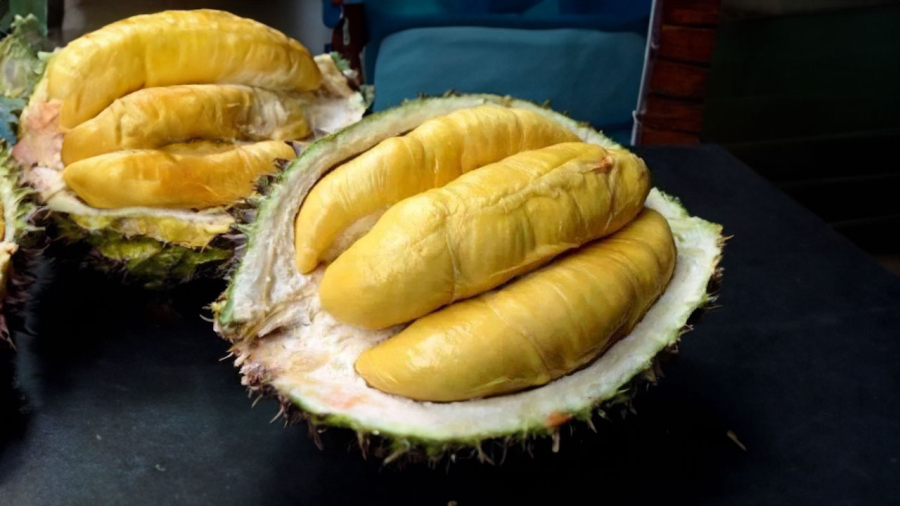
A durian with visible segments is likely to have abundant flesh and few seeds
Inspecting the Durian’s Spikes:
Mature durians have large, hard spikes, but the tips are slightly rounded, not sharp and pointy like immature durians. Squeeze two spikes together; if they do not press against each other, the durian is ripe. If the spikes compress easily, the fruit is likely young or artificially ripened.
Tapping on the Fruit:
Durian vendors often have a special tool for opening the fruit. Borrow it and tap on the durian or gently shake it. A solid “thud” or “thwack” indicates thick flesh and fewer seeds. A hollow “bong” sound suggests more seeds and less flesh.
How Vendors Open Durian:
Many people ask vendors to open the durian for them, as it can be challenging. Observe how the vendor opens the fruit: If the durian is ripe, the segments will be loose, and the vendor will use a specialized tool to gently pry them apart. If the fruit is immature or artificially ripened, opening it will require considerable effort. If you notice the vendor struggling to open the durian, it is likely not a good choice.
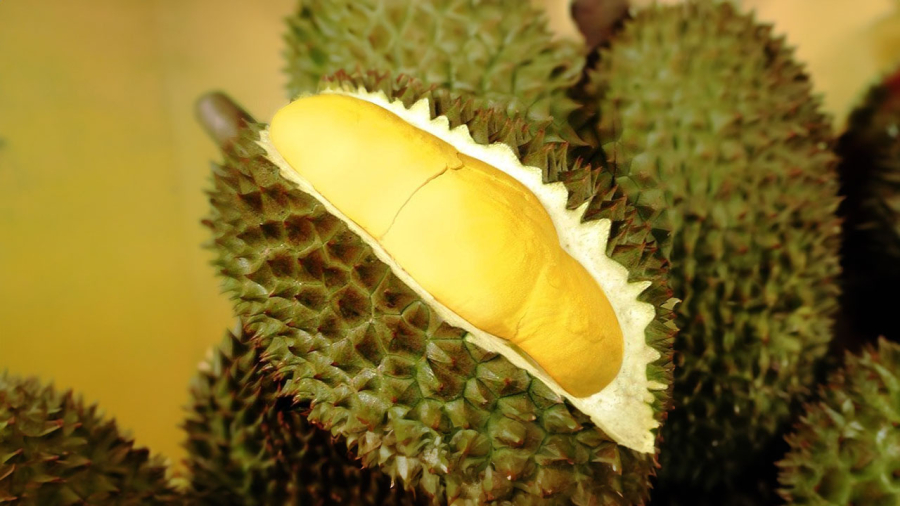
Good durians should have intact stems and rounded spikes, not sharp ones
The Color of the Durian:
Durians with golden-yellow flesh and few seeds have a greenish or brownish-green exterior, with hard, widely spaced spikes. Immature or artificially ripened durians have a light green peel and dense, sharp spikes.
Inspecting the Durian’s Stem:
A firm, fresh stem indicates a ripe, mature durian. If the stem is missing or wilted, the durian may be of poor quality or harvested long ago. Also, examine the base of the stem, as vendors may cut it off to make the fruit appear fresher.
By following these tips, you can confidently select durians that are full of flesh, low on seeds, and bursting with sweet, fragrant goodness.
Are there any telltale signs that a durian is ripe and meaty?
< 'faq-answer >
Ripe durians will have a slightly cracked exterior, releasing a distinctive aroma. When you squeeze two spikes together, they should not press against each other, indicating ripeness. A hollow sound when tapped or shaken also suggests a durian with more seeds and less flesh.

























